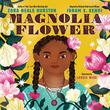While editing a review of Yellow Butterfly: A Story From Ukraine (Red Comet Press, Jan. 31, 2023) by Oleksandr Shatokhin, I found myself wondering: Who is this book for? It’s a wordless picture book—is it for kids still mastering reading? But given that it explores the impact of war, is it better suited for older elementary schoolers? After the reviewer and I conferred, we concluded that this one is for everybody. Well, perhaps not literally everyone, but this child’s-eye perspective of the Russian-Ukraine war works on many levels (we ultimately recommended it for ages 5-12). Avoiding overt violence, Shatokhin offers abstract imagery that may stir readers but won’t disturb them. While educators using the book to introduce discussions of military conflict will need to tailor their discussions depending on the age and sensitivity of students, it’s nevertheless a potent story for readers of almost all ages. (Artistically minded teens and adults might even find some inspiration here.)
 Though Shatokhin’s book isn’t due out until next year, several other recently published picture books also have open-ended age ranges. Leaving readers not with clear takeaways but with questions to ponder, these mesmerizing books will linger, beckoning young people to return to them with different perspectives.
Though Shatokhin’s book isn’t due out until next year, several other recently published picture books also have open-ended age ranges. Leaving readers not with clear takeaways but with questions to ponder, these mesmerizing books will linger, beckoning young people to return to them with different perspectives.
Magnolia Flower (Harper/HarperCollins, Sept. 6) is Ibram X. Kendi’s adaptation of a short story by Zora Neale Hurston. The protagonist is the daughter of a Black man who fled slavery and a Cherokee woman who escaped the Trail of Tears; she falls in love with a Black man whom her father deems unworthy. Loveis Wise’s illustrations pulse with color, while Kendi’s thoughtful backmatter offers adults the opportunity to start conversations on oppression and resistance, the power of love, and Hurston’s life and work.
 Readers of The Bird Coat (Enchanted Lion, Oct. 18) by Inger Marie Kjølstadmyr, translated from Norwegian by Kari Dickson, may smile knowingly at its premise—a Parisian tailor named Pierre fashions a coat with wings and prepares to take off from the Eiffel Tower. But what appears to be a story of attaining lofty dreams changes course as Pierre plummets to his death. Kjølstadmyr’s matter-of-fact prose is devoid of sentimentality, while Øyvind Torseter’s loose-lined illustrations are gleefully chaotic. Is this a cautionary tale? A lesson on living life to the fullest no matter the consequences? A musing on storytelling itself (the book is narrated by a barber telling the story to a young client)? Perhaps all of the above and more—this compelling tale defies labels.
Readers of The Bird Coat (Enchanted Lion, Oct. 18) by Inger Marie Kjølstadmyr, translated from Norwegian by Kari Dickson, may smile knowingly at its premise—a Parisian tailor named Pierre fashions a coat with wings and prepares to take off from the Eiffel Tower. But what appears to be a story of attaining lofty dreams changes course as Pierre plummets to his death. Kjølstadmyr’s matter-of-fact prose is devoid of sentimentality, while Øyvind Torseter’s loose-lined illustrations are gleefully chaotic. Is this a cautionary tale? A lesson on living life to the fullest no matter the consequences? A musing on storytelling itself (the book is narrated by a barber telling the story to a young client)? Perhaps all of the above and more—this compelling tale defies labels.
 As the protagonist of Roger Mello’s João by a Thread (Elsewhere Editions, Oct. 25), translated from Portuguese by Daniel Hahn, prepares to fall asleep, his mind races with questions—some are born of a child’s natural curiosity, but others seem to be the product of his anxieties, especially concerning his father’s fishing trips. Mello’s abstract artwork depicts the threads of João’s blanket raveling and unraveling, a striking metaphor for the boy’s thoughts and a jumping-off point for readers to explore the worries that keep them up at night, too.
As the protagonist of Roger Mello’s João by a Thread (Elsewhere Editions, Oct. 25), translated from Portuguese by Daniel Hahn, prepares to fall asleep, his mind races with questions—some are born of a child’s natural curiosity, but others seem to be the product of his anxieties, especially concerning his father’s fishing trips. Mello’s abstract artwork depicts the threads of João’s blanket raveling and unraveling, a striking metaphor for the boy’s thoughts and a jumping-off point for readers to explore the worries that keep them up at night, too.
In Levi Pinfold’s Paradise Sands: A Story of Enchantment (Candlewick Studio, Nov. 8), four siblings on their way to visit their mother come across a palace inhabited by a talking lion and other animals. When her older brothers fall under the palace’s spell, it’s up to the youngest to rescue them. Pinfold’s sumptuous, hyper-realistic paintings are peppered with ever so slightly off-kilter details, making for an immersive fever dream of a story. Readers who embrace ambiguity will be delighted—this is a tale ripe for discussion and one that will inspire burgeoning writers to pen spinoffs or sequels.
Mahnaz Dar is a young readers’ editor.



































